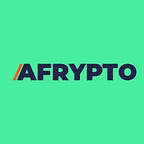If you bought or intend to buy some crypto currencies or NFTs, you will certainly need where to store them. Just like you store your money/cash in your bank account or your pocket wallet.
As we covered in the first article about NFTs, cryptocurrencies and NFTs are built on the blockchain.
Before thinking about how you can make money through NFTs, there is something more important that you should consider first. And that is YOUR WALLET SECURITY!
Many people made a HUGE gains by investing in crypto and NFTs but could no longer access their assets due to different reasons. Yes, thousands and hundreds of thousands of dollars $$$,$$$ are lost because of that.
This means, getting these things straight is your first step into the world of cryptocurrencies and the metaverse.
There are 2 types of wallets that we will cover in this article. Both of them enable you to store your funds and they have 2 things in common:
1. Public keys
A public key is like your email address, you can share it with others as a way of identifying you. Your friends can send you money on that public key or address.
Note here, each blockchain has its own type of public keys:
For Ethereum it looks something like this: 0xDC25EF3F5B8A186998338A2ADA83795FBA2D695E
2. Private Keys
Your private key is like your password, you wouldn’t give it to anyone else. If someone gains access to it, you’re f*cked!
Private Keys are also like your signature on the blockchain. Each transaction should be signed by the private keys to be validated and registered on the blockchain. That being said, make sure to DOUBLE-CHECK each contract you are signing through your wallet!
There are 2 types of wallets
1. Custodial wallets:
Almost like your bank account. Custodial wallets are created and controlled by an entity, usually centralized crypto-exchanges (CEX) like Coinbase, Binance, FTX… or banks. They are created and held by these entities because you trust them. Custodial wallets are easy to use and your password is stored on the server of that company. In case you forget it, you might be able to re-gain access through ID verification or other ways.
Custodial wallets are easy to use and very intuitive in a way that makes buying and selling crypto quite smooth.
However they have some limits, the major 2 downsides of custodial wallets are:
- If you are using a centralized exchange like the ones mentioned above, there is a high likeliness that they don’t list all the coins available in the market, mainly for your own security.
- The 2nd one is the fact that you can’t mint or buy the NFTs that are outside of their platform. And more than 90% of NFTs aren’t listed on centralized exchanges, you’ll have to use a non-custodial wallet in order to be able to buy/sell and store them.
2. Non-Custodial wallets:
On the other hand, non-custodial wallets are completely owned and controlled by YOU. Therefore you’re the one responsible for your wallet’s security, not any third-party.
Non-custodial wallets can be in the form of software, either a browser-extension or a mobile app. But there are also non-custodial hardware wallets.
When setting up your non-custodial wallet for the first time, you must safely store your SEED PHRASE so no one but you can access it!
The seed phrase is composed of 12 or 24 words that you must note somewhere safe. And you must keep them in the generated order (picture below).
If you lose your seed phrase, you are f*cked!
If someone knows what is your seed phrase, you are… (hopefully you got it by now). No one with good intentions will ever ask for your seed phrase, not even the customer support of your wallet. AGAIN, don’t share your seed phrase with ANYONE!
Although non-custodial wallets might seem somewhat complicated at first, you’ll quickly get used to them, and you should! Because that is how you can trade the real NFT Projects and it also grants you access to Decentralized Exchanges (DEX) on which you can find all the coins you may want to buy.
Some non-custodial wallets like MetaMask are compatible with Ethereum, Polygon blockchain and Layer 2 scaling solutions (L2s) for
Most famous NFTs Marketplaces on Ethereum are OpenSea, Rarible, Foundation… And if you remember what we said in the first article, each blockchain has its own NFTs, the same goes for these platforms. Although there is emerging marketplaces that support different chains.
If you plan to use to Solana chain, Phantom or Solfare are two of the best options possible for non-custodial wallets.
Takeaway:
If you’re just starting out with crypto, our advice is to go for a custodial wallet at first. Use it for your first transactions.
Once you get used to it, then you can start experimenting with non-custodial wallets. But stay safe, there are so much scams out there! DON’T ever share your seed phrase or private keys! Don’t sign transactions on any website that isn’t audited and verified by renowned companies.
Last but not least:
The crypto and NFT spaces are full of inspiring and amazing people that you can network with. Nonetheless, there are also many scammers and thieves who are always looking to grab some coin.
- Make sure to ALWAYS DOUBLE CHECK any interactions with your wallet.
- Avoid using websites that aren’t well-established and trustworthy.
- Search the name of the project you want on Twitter and find the official account, from there you can access the website. Sometimes phishing websites can be better ranked on Google than the official ones, so you better click the links on Twitter.
We hope this article gave you some useful information about wallets and how to use them. If you still are struggling with any information, don’t hesitate to share with us your questions or the topics you would like us to cover.
Follow our social channels:
